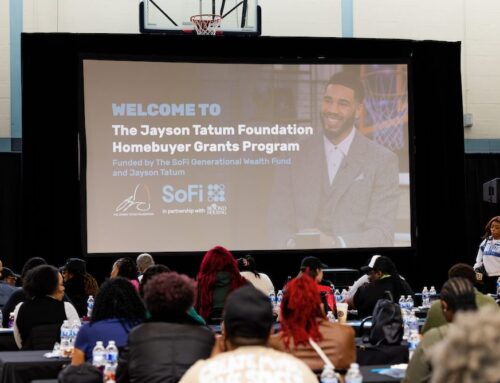Any time you can get a lower rate by refinancing one or more private student loans, you might as well. A lower fixed or variable rate, especially if combined with a shorter loan repayment term, may result in substantial savings.
Refinancing federal student loans may also sometimes be a smart move, but borrowers should keep in mind President Joe Biden’s announcement in August to cancel $10,000 or $20,000 in federal student debt per qualifying loan holder.
Federal Student Loan Cancellation Details
Single people earning under $125,000 will qualify for $10,000 in federal student loan debt cancellation. If you’re a head of household or are married and file a joint tax return, you qualify if your income is below $250,000.
If you received a Pell Grant and meet those income limits, you are to receive an extra $10,000 in federal student loan cancellation.
For a current student claimed as a dependent by someone else, eligibility will be based on that person’s income and not the student’s.
The Biden administration also proposed a new income-driven repayment plan that would reduce payments on undergraduate loans to 5% of discretionary income instead of the 10% to 20% required by the existing income-based repayment plans.
Finally, Biden extended the pause in payments and interest accrual for federal student loans through 2022.
A Sobering Speech About Rates
That same week, Federal Reserve Chairman Jerome Powell said the Fed must continue to raise interest rates — and keep them elevated for some time — to tame inflation.
The federal funds rate is not directly connected to consumer interest rates, but it can have a major influence on those rates.
Should Private Loan Holders Refinance?
Borrowers can check current fixed and variable rates for refinancing — replacing one or more student loans with a single, new private loan with a single monthly payment. They’ll save money if the new loan has a lower interest rate.
There’s typically no cost to refinance, and you can refinance more than once.
A refinancing calculator can be helpful.
Refinancing may make sense if:
• You have private student loans or a combination of private and federal student loans and can gain a lower rate. Just realize that by refinancing federal student loans to a private loan, you would lose access to the payment and interest pause, $10,000 to $20,000 in federal student loan forgiveness, and federal income-driven repayment plans.
• You have a stable income.
• You have good or excellent credit.
• You have access to a co-signer who meets those criteria if you do not.
Lenders may offer a variable or fixed rate.
• Fixed-rate private student loans lock in the rate once you agree to the terms of the loan, so you’ll pay the same interest rate for the life of the loan.
• Variable-rate loans have a rate that changes based on the market. The loans typically start with interest rates that are 1% to 2% lower than comparable fixed-rate loans. Even if interest rates rise, variable rates often still save money over the long term. Here’s a good example and more information.
When deciding on a rate structure, considerations include the life of your loan (a longer loan term may mean more interest variation over time), your budget, and what makes sense for your overall financial strategy.
You may refinance to a variable rate and then a fixed rate or vice versa as long as you qualify.
Should Federal Student Loan Holders Refinance?
The White House estimates that 20 million borrowers will have their full remaining balance canceled. Millions will still have some federal student loan debt, however.
Parents and graduate or professional students pay the highest interest rates on federal student loans.
Those with Direct PLUS Loans (current rate, 7.54%) and graduate and professional students with Direct Unsubsidized Loans (current rate, 6.54%) might benefit by refinancing any amount beyond forgiven debt. Yes, even parent PLUS loans qualify for loan forgiveness.
Borrowers of federally held loans have an alternative to refinancing that allows them to remain in an income-driven plan or other federal program: consolidation. Consolidation may lower your payments by extending the loan term (up to 30 years), but the interest rate is not reduced: It’s an average of all of your federal student loans’ rates, rounded up to the nearest one-eighth of a percentage point.
To refinance or consolidate: That is the question. Neither choice will be the right one for everyone.
Could I Get Loan Forgiveness If I Refinance?
The Biden plans do not address private student loan forgiveness, and now we have specific numbers for federal student loan cancellation.
It might be a good idea to keep in place the $10,000 or $20,000 of federal debt that will be forgiven, if you qualify, and then consider whether to refinance any federal student loans beyond that. Once you refi federal student loans, they become a private student loan.
The Takeaway
Is now a good time to refinance private student loans? If you can get a lower rate, it makes sense to do so, and rates in general appear to be on the rise. The earlier you refinance to a lower rate, the more money you will save.
SoFi refinances both federal and private student loans.
Good to know: SoFi will honor the first six months of any existing grace period of the loans you refinance. And deferment and forbearance are available during financial hardship.
Interested in refinancing your student loans? Start with a rate quote.
SoFi Student Loan Refinance
IF YOU ARE LOOKING TO REFINANCE FEDERAL STUDENT LOANS, PLEASE BE AWARE OF RECENT LEGISLATIVE CHANGES THAT HAVE SUSPENDED ALL FEDERAL STUDENT LOAN PAYMENTS AND WAIVED INTEREST CHARGES ON FEDERALLY HELD LOANS UNTIL DECEMBER 31, 2022 DUE TO COVID-19. PLEASE CAREFULLY CONSIDER THESE CHANGES BEFORE REFINANCING FEDERALLY HELD LOANS WITH SOFI, SINCE IN DOING SO YOU WILL NO LONGER QUALIFY FOR THE FEDERAL LOAN PAYMENT SUSPENSION, INTEREST WAIVER, OR ANY OTHER CURRENT OR FUTURE BENEFITS APPLICABLE TO FEDERAL LOANS. CLICK HERE FOR MORE INFORMATION.
Notice: SoFi refinance loans are private loans and do not have the same repayment options that the federal loan program offers such as Income-Driven Repayment plans, including Income-Contingent Repayment or PAYE. SoFi always recommends that you consult a qualified financial advisor to discuss what is best for your unique situation.
Financial Tips & Strategies: The tips provided on this website are of a general nature and do not take into account your specific objectives, financial situation, and needs. You should always consider their appropriateness given your own circumstances.
SOSL0822015
The post Is Now the Time to Refinance Your Private Student Loan? appeared first on SoFi.





Leave A Comment